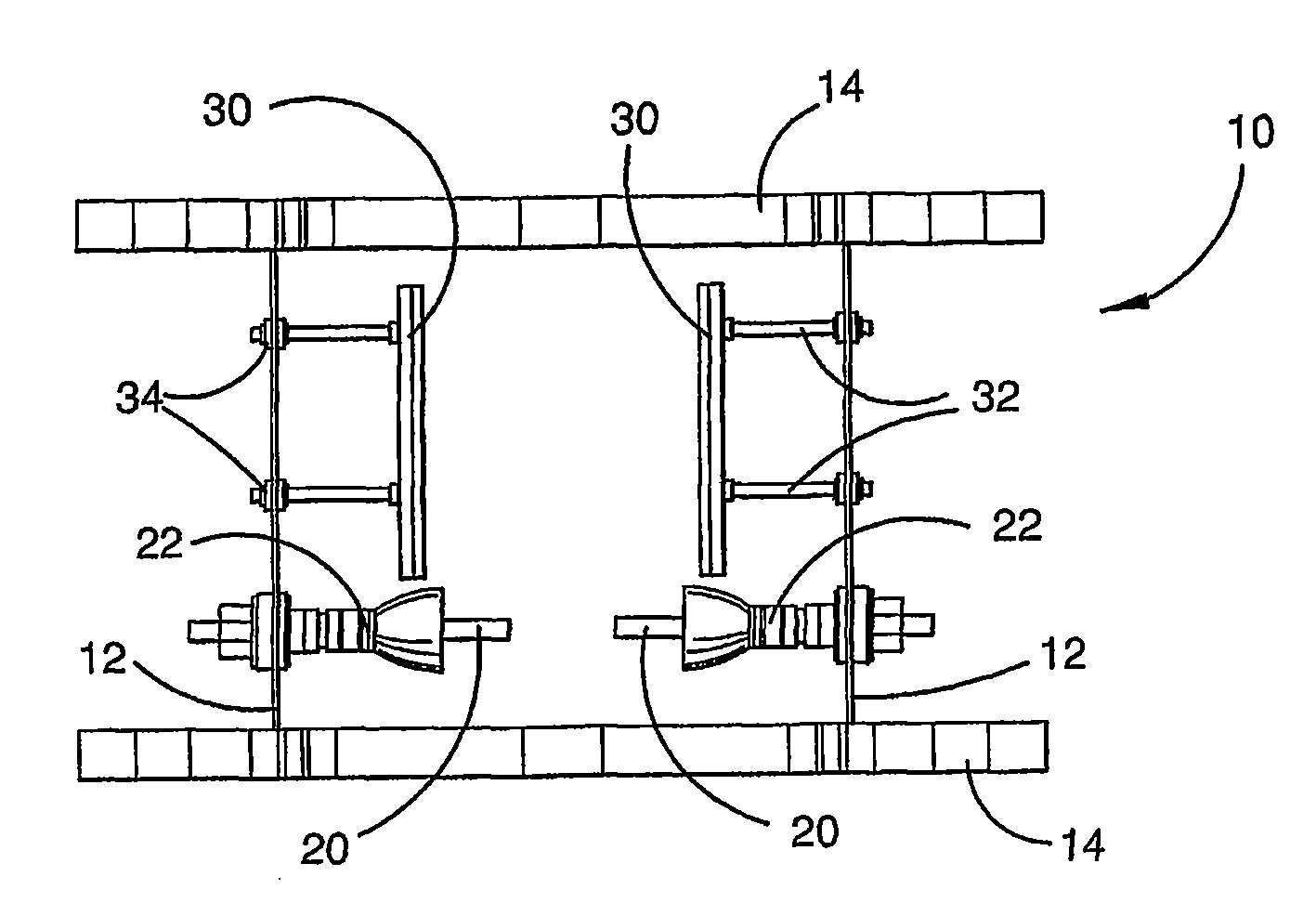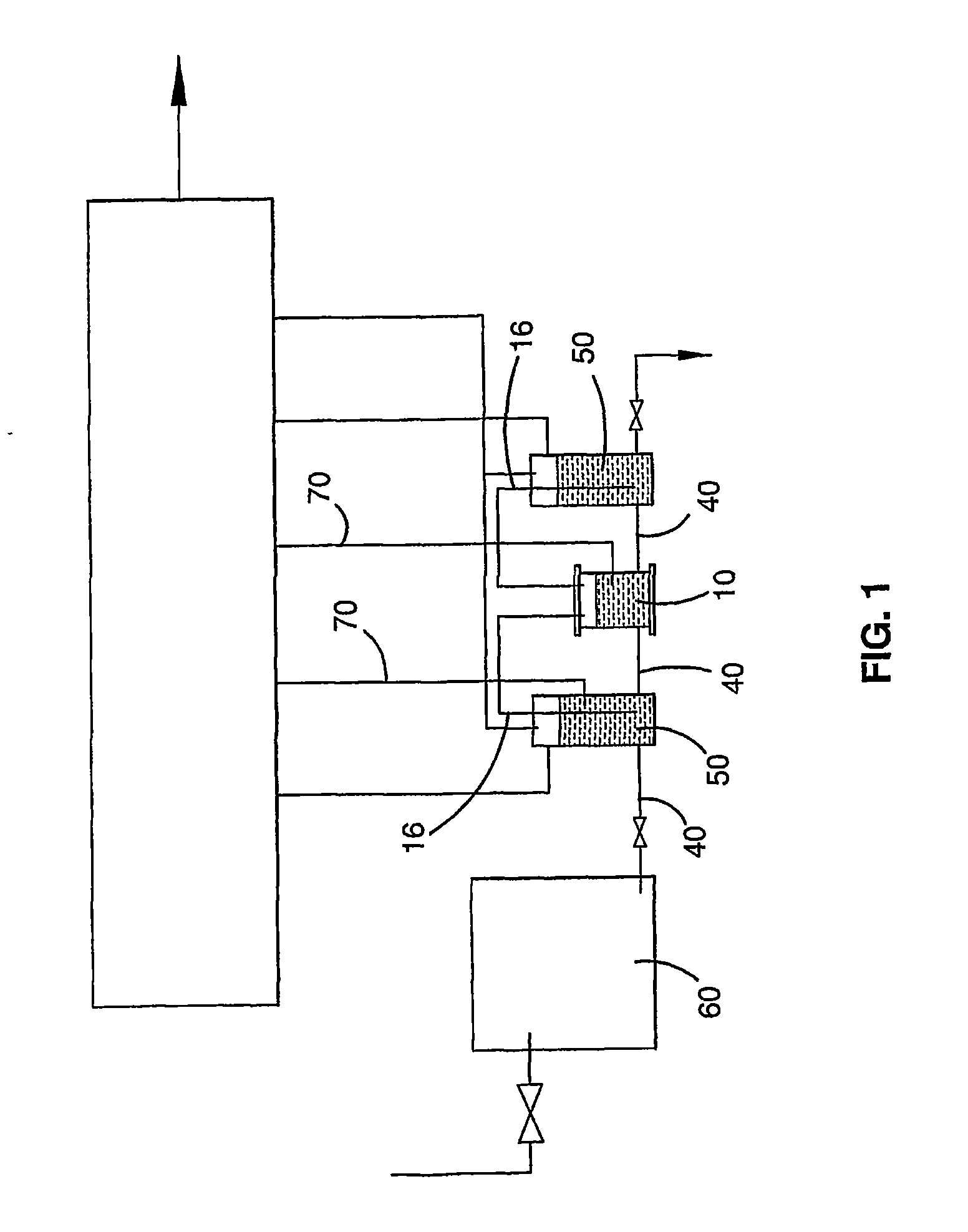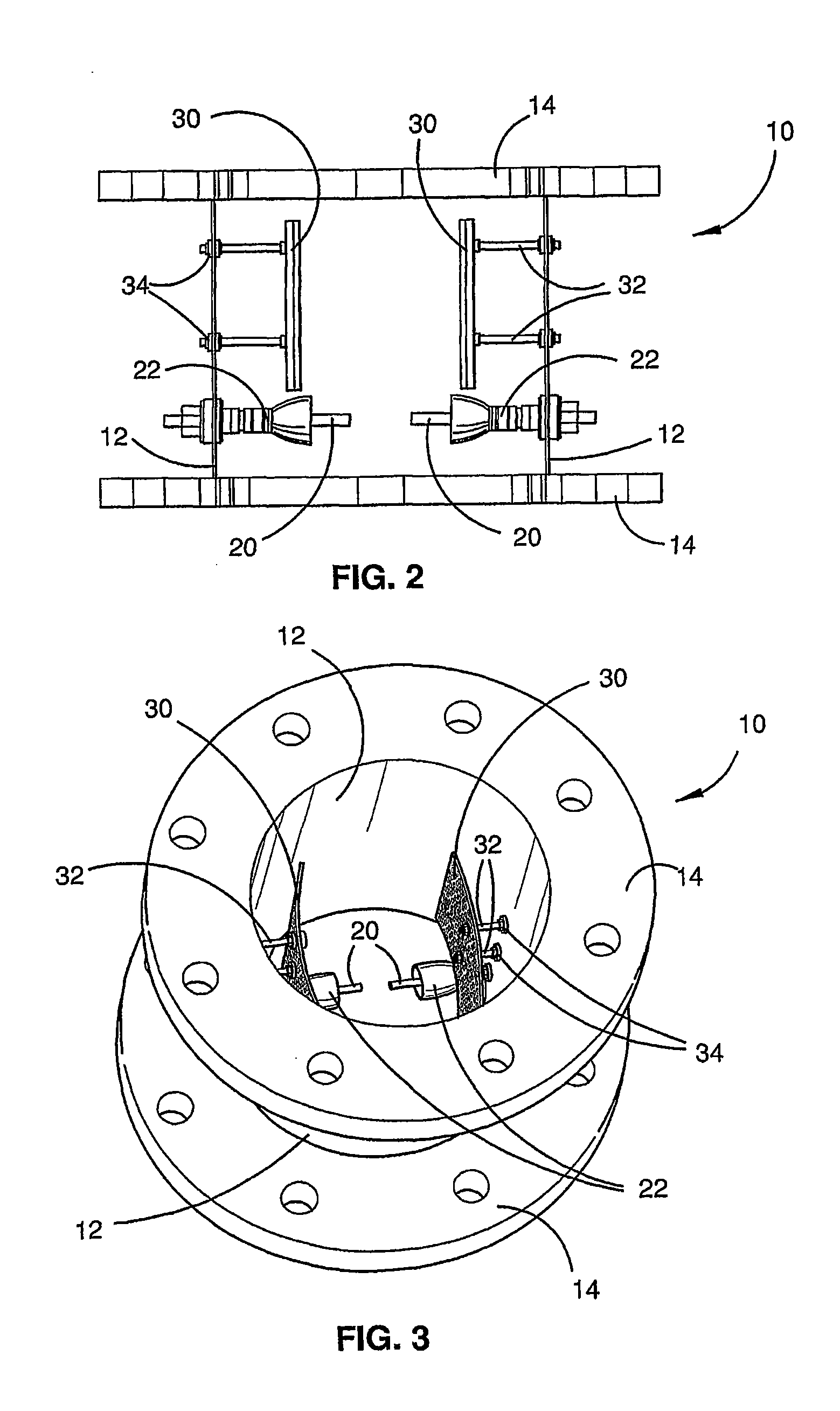Method and apparatus for producing hydrogen and oxygen gas
a technology of hydrogen and oxygen gas and apparatus, applied in the field of electrolysis of water, can solve the problems of limited conversion efficiency (i.e. the energy produced versus the energy input to drive the process) of less than 90%, high initial capital cost, and limited application to specialist purposes. , to achieve the effect of reducing the effect of turbulen
- Summary
- Abstract
- Description
- Claims
- Application Information
AI Technical Summary
Benefits of technology
Problems solved by technology
Method used
Image
Examples
Embodiment Construction
[0054]An electrolysis process in accordance with the present invention may be performed with the apparatus illustrated in FIG. 1.
[0055]The apparatus comprises an electrolysis cell 10 linked to gas separators 50 by electrolyte conduits 40 and off-gas lines 16. The separators 50 are linked to an electrolyte reservoir 60 by a further electrolyte conduit 40 to ensure that the separators remain filled with electrolyte. Thermocouples 70 are located respectively in the cell 10 and in a separator 50 to monitor the temperature of the electrolyte. Although not shown in FIG. 1, two separate power sources provide electrical energy for the electrolysis process.
[0056]The cell 10 (as shown in FIG. 2) comprises a hollow cylindrical body 12 with outwardly extending flanges 14 at each end of the body 12. The flanges 14 enable covers (not shown) to be fastened to each end of the body 12 with intermediate gaskets to form a closed volume within the cylindrical body 12 that is air-tight and water-tight.
[...
PUM
| Property | Measurement | Unit |
|---|---|---|
| Temperature | aaaaa | aaaaa |
| Molar density | aaaaa | aaaaa |
| Current | aaaaa | aaaaa |
Abstract
Description
Claims
Application Information
 Login to View More
Login to View More - R&D
- Intellectual Property
- Life Sciences
- Materials
- Tech Scout
- Unparalleled Data Quality
- Higher Quality Content
- 60% Fewer Hallucinations
Browse by: Latest US Patents, China's latest patents, Technical Efficacy Thesaurus, Application Domain, Technology Topic, Popular Technical Reports.
© 2025 PatSnap. All rights reserved.Legal|Privacy policy|Modern Slavery Act Transparency Statement|Sitemap|About US| Contact US: help@patsnap.com



